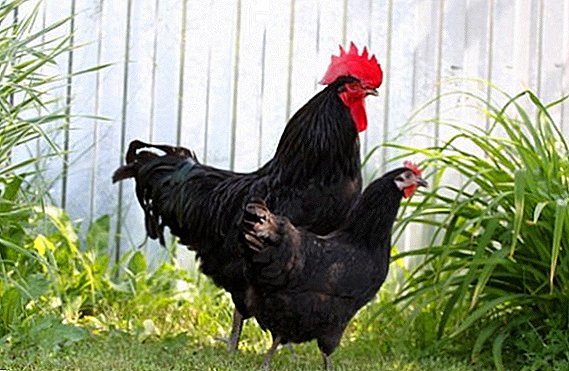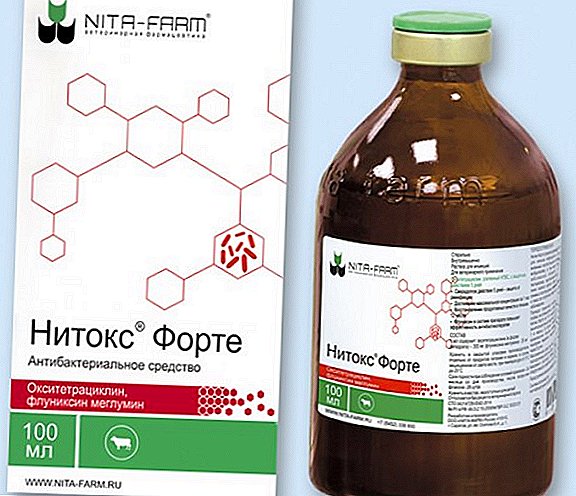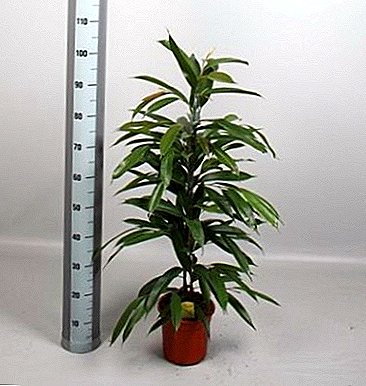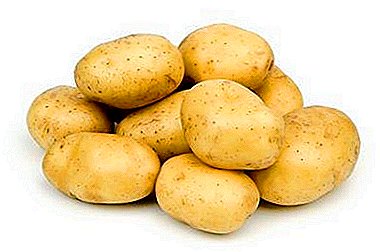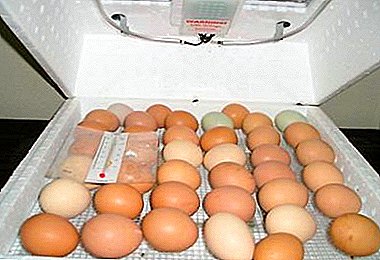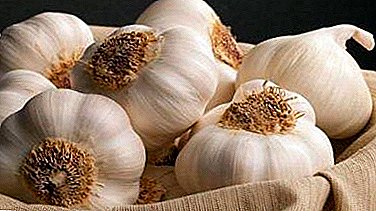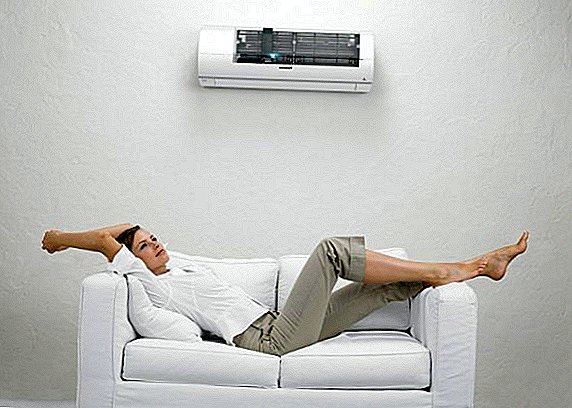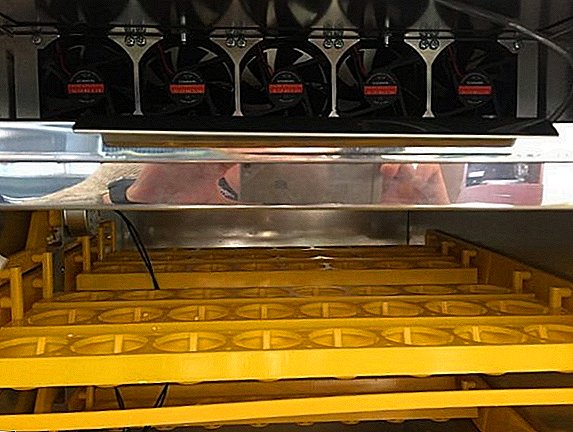 The market offers a large number of imported and domestically produced incubators, which are similar in their general operating principle, but differ significantly in many respects. From the article, you will learn what an AI-192 incubator is, how it differs from its analogues, what its functionality is, as well as what can be attributed to the strengths and weaknesses of the device.
The market offers a large number of imported and domestically produced incubators, which are similar in their general operating principle, but differ significantly in many respects. From the article, you will learn what an AI-192 incubator is, how it differs from its analogues, what its functionality is, as well as what can be attributed to the strengths and weaknesses of the device.
Model Description
Before you is a Russian-made household incubator, which belongs to a new generation. "AI-192" was developed in 2013-14. It has improved functionality and advanced features.
Did you know? The idea of getting young birds artificially came to us from ancient Egypt, where the first incubators were barrels or refitted ovens, in which the temperature was maintained by burning straw. The volume of primitive incubators allowed to simultaneously place up to 10 thousand eggs.
The necessary airflow is provided at once by 5 fans. At the same time, if one of them fails, the program increases the number of revolutions on the other working fans to ensure the specified working conditions.  Water to ensure the necessary humidity is dialed automatically if the incubator is connected to the water supply system.
Water to ensure the necessary humidity is dialed automatically if the incubator is connected to the water supply system.
For heating and temperature control, built-in heater (tubular electric heater) is used. Producer and distributor of products is the company "Crazy Farm", which offers devices at a price of 25.7 thousand rubles. per unit (11.5 thousand UAH. or $ 430).
The device creates conditions that are as close to natural as possible, which allows to obtain a high yield of young stock of various types of poultry.
Read also about the features of such incubators as: "Blitz", "Universal-55", "Layer", "Cinderella", "Stimulus-1000", "IFH 500", "Remil 550TsD", "Ryabushka 130", "Egger 264 "," Perfect hen ".
Appearance and body
When choosing an incubator, its appearance is first evaluated, which must meet certain standards. The form factor is able to significantly improve the functionality of the device, as well as facilitate its use. Model "AI-192" is simply arranged and easy to use.
In appearance, the unit resembles a small rectangular refrigerator with a transparent door. Inside there are grooves on which 4 egg trays are installed. Above the door is an information panel, as well as buttons to control the incubator.  The device is sheathed with galvanized steel sheets, which positively affects the service life, but increases the weight. In a complete assembly (without eggs and water), the unit weighs 28 kg. Dimensions - 51x71x83 cm
The device is sheathed with galvanized steel sheets, which positively affects the service life, but increases the weight. In a complete assembly (without eggs and water), the unit weighs 28 kg. Dimensions - 51x71x83 cm
Trays (honeycombs)
For laying out eggs are used trays of lightweight impact-resistant plastic. The material is protected from rapid wear during use.
Important! You can not incubate the eggs of those species of birds that are not listed in the list, as the functionality of the device does not allow to get healthy young.
Trays can accommodate the following number of eggs of different species of bird:
- chickens - 192;
- pheasants - 192;
- guinea fowl - 192;
- quails - 768;
- ducks - 192 (only medium sizes);
- geese - 96.

The main parameters of the incubator "AI-192"
Consider the important characteristics of the domestic incubator, as well as features of the functional.
Specifications
This device can be powered from a normal network through a standard outlet.
| Options | Magnitude |
| Nutrition | 220V |
| Maximum energy consumption | 90 W / h |
| Average consumption | 25 W / h |
| Temperature Sensor Accuracy | up to 0.1 ° C inclusive |
Learn how to choose the right incubator for your home.
Enclosure Functionality
Automatic features save the owner from unnecessary work. At the same time, the ability to set many settings manually makes management flexible and efficient:
- Large temperature range. Manufacturers of the device provided the possibility of changing the temperature in the range from 10 to 60 ° C.
- Air humidity. The moisture level can be increased up to 85% inclusive. High humidity favorably affects the process of incubation with a significant increase in air temperature.
- Adjusting the microclimate. You can adjust the lower and upper limit of the air temperature inside the device, as well as adjust the humidity thresholds at which the incubator will sound an alarm. If the temperature rises above the maximum allowable, immediately turns on the cooling fan.
- Turn the eggs. Displays information about the frequency and speed of rotation of the trays. The possibility of forced mechanical rotation. In this case, you can completely disable the automatics, after which the rotation can be carried out exclusively manually.
- Reset. The ability to reset the software settings to the factory settings, and then re-program the device to incubate the eggs of a particular bird species.

Important! The unit is equipped with an evaporator, which reduces the humidity of the air upon reaching the specified limit.
Features of the use of the device when hatching young
Immediately after buying the device, you must fully read the instructions. Maximum attention should be paid to the rules of operation and disinfection. After that, wash the chamber with water with the addition of chlorine (20 drops per 1 liter). It is important to do this well before the intended incubation so that the residues of the detergent disappear.
- Correct location. The device must be placed in a place where daily temperature drops are minimal. Immediately it is necessary to exclude corridors and places where there are frequent drafts. Putting near the entrance to the house is also not worth it.
- Water supply To get a full-featured device, it is necessary immediately after installation to make a supply of tap water, which the incubator will use in the process. If you do not do this, you will need to regularly check the level of the liquid, otherwise the humidity will drop to a critical point.
- Preliminary testing. In order not to spoil two hundred eggs due to incorrect settings of the incubator, you must first test the functionality, as well as identify possible errors in the program. To do this, set the incubation program for chicken eggs and place a thermometer in the incubator, and then watch for a few hours the changes in the indicators, as well as their compliance with the specified settings. It is best to place two thermometers that will show the temperature separately in the upper and lower trays.
- Selection of eggs. For incubation only fertilized eggs are used, which were demolished 7-10 days ago. It is necessary to take into account the percentage of hatchability, as well as belonging to a particular breed. Before incubation, eggs should be stored at a temperature of 5-21 ° C, and also turned over daily.
- Preparation of eggs. Before starting the process it is necessary to heat the eggs in the room. No need to put them on the battery or heater, just transfer them to the place where the temperature is 20-23 ° C. This is done in order to reduce the temperature drops.
- Start the incubator. Carefully place the eggs in the trays, then close the door and set the program. Initially, the temperature will drop slightly, but this does not affect the eggs. It is not necessary to set the temperature above what is permitted in order to “warm” the eggs, as this can kill the embryos.
- Control the start of incubation. Immediately after starting the process, you need to make a note in which the date and time of launch are indicated. Sometimes the program gives an error, which causes the days to go astray.
- Care for the eggs. The unit, although it has advanced technology, is not able to compensate for the temperature difference that is formed between the upper and central trays. For this reason, you need to rearrange the trays every day to increase the percentage of young stock.
- Control the development of the embryo. On days 7-10, it is recommended that each egg be enlightened to make sure that the process is progressing. Bring a flashlight or other bright light source to each egg so that the embryo shines through. If the embryo is not visible, it means that the egg is rotten or was not fertilized.

Preparation for hatching:
- 3 days before the expected appearance of chicks, the swivel mechanism must be turned off. Also, you no longer need to change trays in places and open the incubator.
- Place gauze under each tray so that it will hold pieces of the shell while spitting.
- Programmatically increase the humidity to 65%.
- The first individuals will appear within 24 after the expected date. Until all the chickens (or most) hatch, no need to carry out any manipulations.

Incubator "AI-192": whether to buy a device
Summarize the above functional device to determine the strengths and weaknesses of the incubator "AI-192".
pros
- After setting the basic parameters, the device automatically performs all the necessary tasks, which allows not to be distracted by regulating the operation of the incubator.
- There is protection against unplanned opening of the door.
- Low energy costs.
- Wide range of temperatures and humidity.
- The presence of alarm.
- Compact dimensions to facilitate transportation and placement in the house.
Minuses
- Often, counting the days of incubation is lost.
- The fan delivers a stream of cold air to the upper tray of eggs, which can cause problems.
- Energy costs increase significantly if the humidity in the room where the incubator is located drops below 45%.
- It is necessary to control the heating of eggs in the upper and lower trays. The difference in temperature can be up to 5 ° C inclusive. The automation will show the average temperature in the chamber.
Did you know? The first electric incubators operated on the basis of hot water. Boiling water was poured into special compartments, which allowed creating the required temperature in the device. The water needed to be changed regularly so that the temperature remained stable.
Domestic units are characterized by durability and low price, but lose in terms of technology imported options. The AI-192 Incubator is no exception. For this reason, when buying such equipment should decide what is preferable: low cost or high stability.


